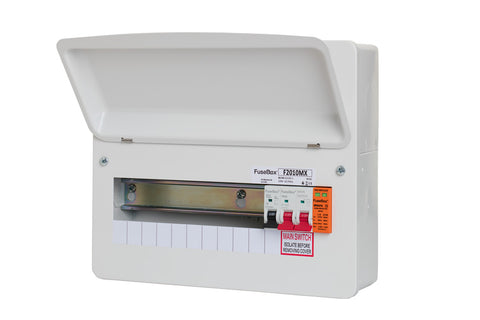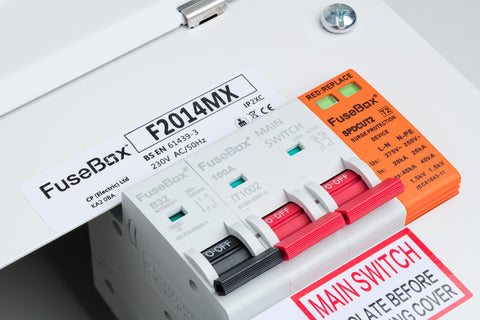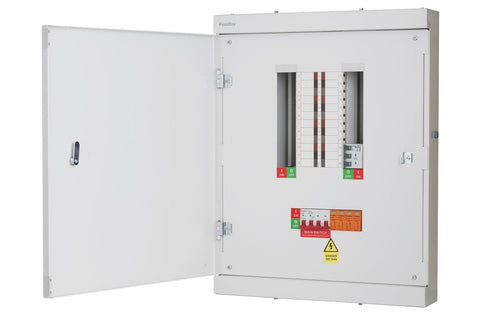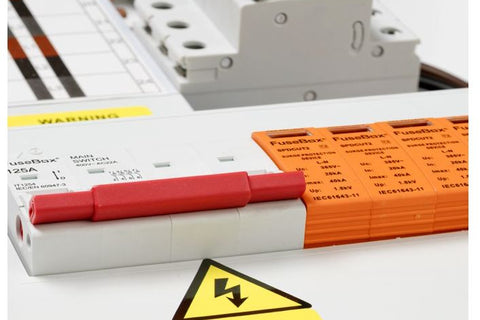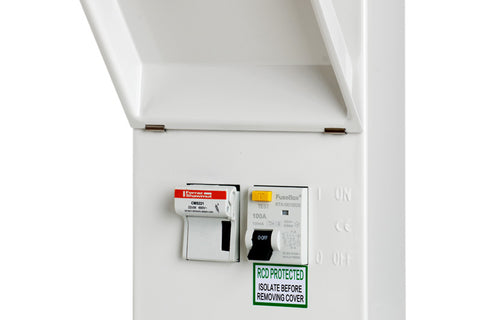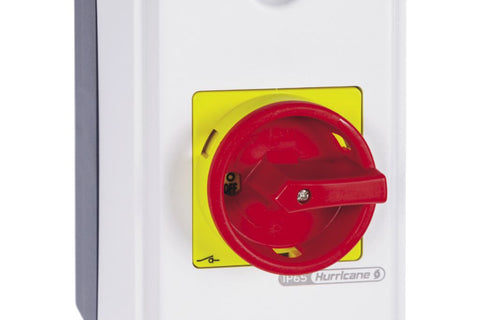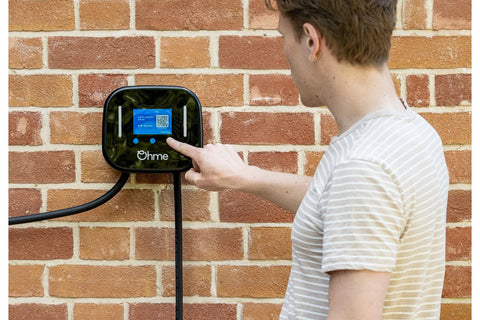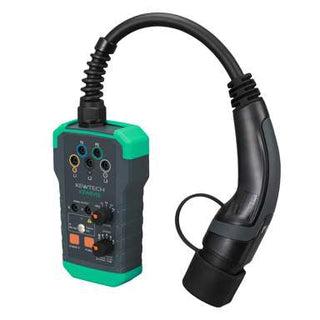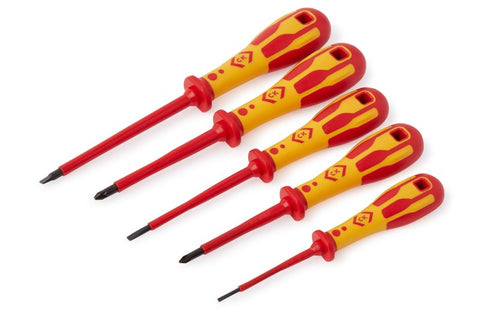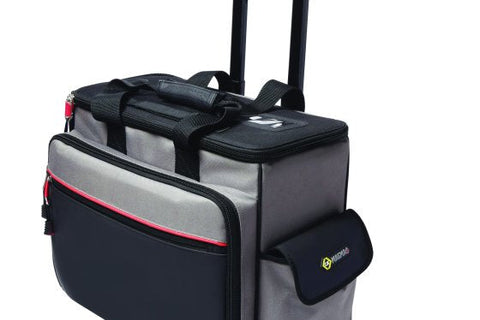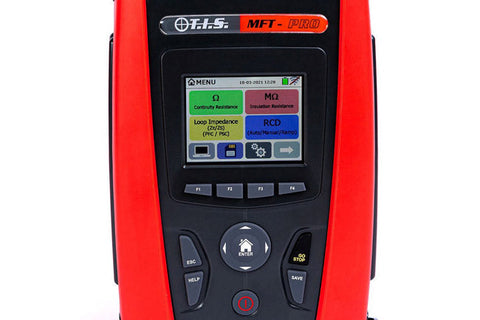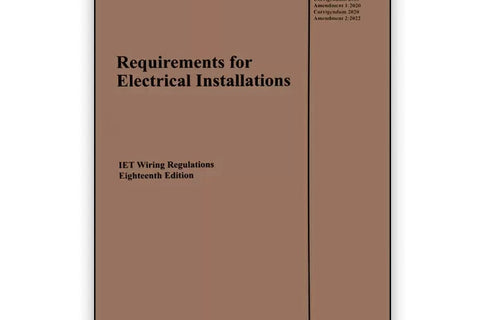Surge Protection - Complete Guide
Surge Protection Devices - SPD
In our modern, technology driven world, the uninterrupted operation of electronic devices is paramount. However, the stability of our electrical grid is far from perfect, and power surges pose a significant threat to our valuable electronics. Surge Protection Devices (SPDs) are the unsung heroes that shield our devices from the damaging effects of power surges. In this comprehensive guide, we'll delve into the world of surge protection, exploring its history, function, manufacturing process, and prominent manufacturers like Hager and Fusebox.

Understanding Surge Protection
Surges, also known as transients, are brief spikes in voltage that can occur in electrical systems due to lightning strikes, switching of electrical equipment, or grid disturbances. These surges can wreak havoc on sensitive electronics, leading to data loss, reduced lifespan, and even complete device failure. Surge protection is the defense mechanism against these voltage spikes, diverting excessive energy away from connected devices and ensuring their safe operation.
The History of Surge Protection
The history of surge protection dates back to the late 19th century when the pioneering efforts of inventors like Charles Francis Dalziel paved the way for the development of surge protection technologies. Initially designed to safeguard telephone lines, surge protection gradually evolved to address the needs of modern electronics, including computers, televisions, and appliances.
How Surge Protection Devices Work
Surge Protection Devices (SPDs) are ingenious devices designed to detect and divert transient surges to an earth ground. They typically consist of three key components:
-
Metal Oxide Varistors (MOVs): These are the heart of SPDs. MOVs are nonlinear resistors that have high resistance at normal voltages but become highly conductive when voltage surges occur. This allows them to shunt excess energy to ground.
-
Gas Discharge Tubes (GDTs): GDTs provide a fast response to surges, creating a low-resistance path to ground and effectively absorbing transient energy.
-
Suppressor Components: These components filter out high-frequency noise and electromagnetic interference, enhancing the overall effectiveness of the SPD.

Manufacturing SPDs: Hager and Fusebox
Prominent manufacturers in the surge protection industry include Hager and Fusebox. These companies specialize in crafting high-quality SPDs with varying features to suit different applications.
-
Hager: Hager has established itself as a leader in electrical protection solutions. Their SPDs are meticulously designed to shield devices from power surges, ensuring optimal performance and safety. Hager offers a diverse range of SPDs for both residential and commercial settings, prioritizing innovation and reliability.

-
Fusebox: Fusebox is another notable player in the surge protection arena. They offer a comprehensive lineup of SPDs designed to safeguard sensitive electronics from voltage spikes. Fusebox focuses on delivering robust surge protection solutions that are easy to install and integrate seamlessly into electrical systems.

Why Surge Protection Matters
-
Device Longevity: Surge protection prolongs the lifespan of your electronic devices by preventing wear and tear caused by power surges.
-
Cost Savings: Replacing damaged electronics can be expensive. Surge protection reduces the likelihood of such replacements, leading to significant cost savings over time.
-
Peace of Mind: Knowing that your valuable electronics are shielded from potential damage provides peace of mind, especially during lightning storms or other grid disturbances.
Conclusion
Surge Protection Devices (SPDs) stand as guardians of our electronics, shielding them from the unpredictable nature of power surges. By understanding the history, function, and manufacturing process of surge protection, you can make informed decisions to safeguard your valuable devices. Manufacturers like Hager and Fusebox play a crucial role in delivering reliable and effective SPD solutions, contributing to the longevity and uninterrupted operation of your electronic investments. With surge protection in place, you can confidently navigate the modern digital landscape, knowing that your devices are shielded from the storms that may come their way.
See our full range of consumer units with surge protection (SPD) here!
Surge Protection FAQ
A Surge Protection Device (SPD) is designed to safeguard electronic devices by diverting excess voltage from transient surges to an earth ground, preventing damage and ensuring uninterrupted operation.
Surge protection is not currently mandatory for all installations in the UK, but it is highly recommended to protect valuable electronic equipment and enhance safety.
While not mandatory, surge protectors are essential for safeguarding electronic devices against power surges caused by lightning strikes, power grid fluctuations, and other sources of voltage spikes.
An SPD protects against voltage surges, while a Residual Current Device (RCD) safeguards against electrical leakage and faults. They serve different purposes and can complement each other for comprehensive protection.
Yes, surge protection is still recommended even if you have an RCD. An RCD and an SPD offer different forms of protection and can work together to ensure the safety and functionality of your electrical system.
It's generally recommended to install an SPD before the RCD. Placing the SPD before the RCD allows it to divert surges before they reach the RCD, ensuring optimal protection for both devices.
As of now, surge protection devices are not a legal requirement in all domestic installations. However, regulations and recommendations may vary by region and electrical standards.
While not mandatory, installing SPDs in domestic settings is strongly advised to enhance safety and protect electronic devices from power surges.
SPDs should be installed at the origin of the electrical installation, typically where the electrical supply enters the building. Additional SPDs can also be strategically placed to protect specific circuits or sensitive equipment.
Yes, SPDs are often connected to an MCB (Miniature Circuit Breaker) for protection and control. The MCB provides overcurrent protection for the SPD and the connected circuit.
Type 1 SPDs are designed to handle direct lightning strikes and are typically installed at the service entrance. Type 2 SPDs provide protection against indirect lightning surges and are commonly installed at distribution boards or subpanels.
The type of surge protection you need depends on various factors, including the level of lightning activity in your area and the specific equipment you want to protect. Consulting a qualified electrician can help determine the most suitable type of SPD for your needs.
Both Type 1 and Type 2 surge protectors serve different roles in a comprehensive protection strategy. Type 1 is designed for direct lightning strikes, while Type 2 handles indirect surges. A combination of both types is recommended for optimal protection.
